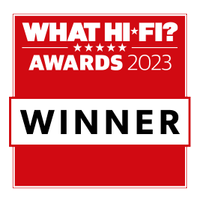What Hi-Fi? Verdict
A powerful, musical and immersive single soundbar that succeeds where many multi-speaker systems fail
Pros
- +
Robust low-end
- +
Excellent Atmos performance
- +
Feature-rich
Cons
- -
No VRR or ALLM at launch
- -
EQ controls would be nice
- -
Slightly confused styling
Why you can trust What Hi-Fi?
UPDATE: The Sony HT-A7000 has now been discontinued and replaced. Check out our Bravia Theatre Bar 9 review, our guide to the best soundbars available right now, or scroll down for the original HT-A7000 review
At the top end of the soundbar market, there are two schools of thought. The first is that costlier models warrant additional speakers for enhanced bass and surround performance. The second is that a single, high-quality soundbar should be able to competently deliver excellent treble clarity, bass and a room-filling sound on its own – with extra boxes available (though not necessary) to suit the taste, homes and pockets of the buyer.
The Sony HT-A7000 falls firmly into the latter camp. This 7.1.2 slab of sound packs two up-firing speakers, two beam tweeters, five front-facing drivers and a built-in dual subwoofer into a single chassis.
And it’s an approach that appeals. After all, isn’t the point of a soundbar that it delivers cinematic audio without the need for lots of speakers? Of course, we also understand that low frequencies are most faithfully reproduced by larger drivers and that reflected surround sound is no match for direct audio. Often though, we’ve found that multi-box systems aren’t cohesive as a whole and rather than increase the perception of immersive and realistic sound, if they’re not all top performers, the sub and surrounds become distracting. Which rather defeats the point.
Price
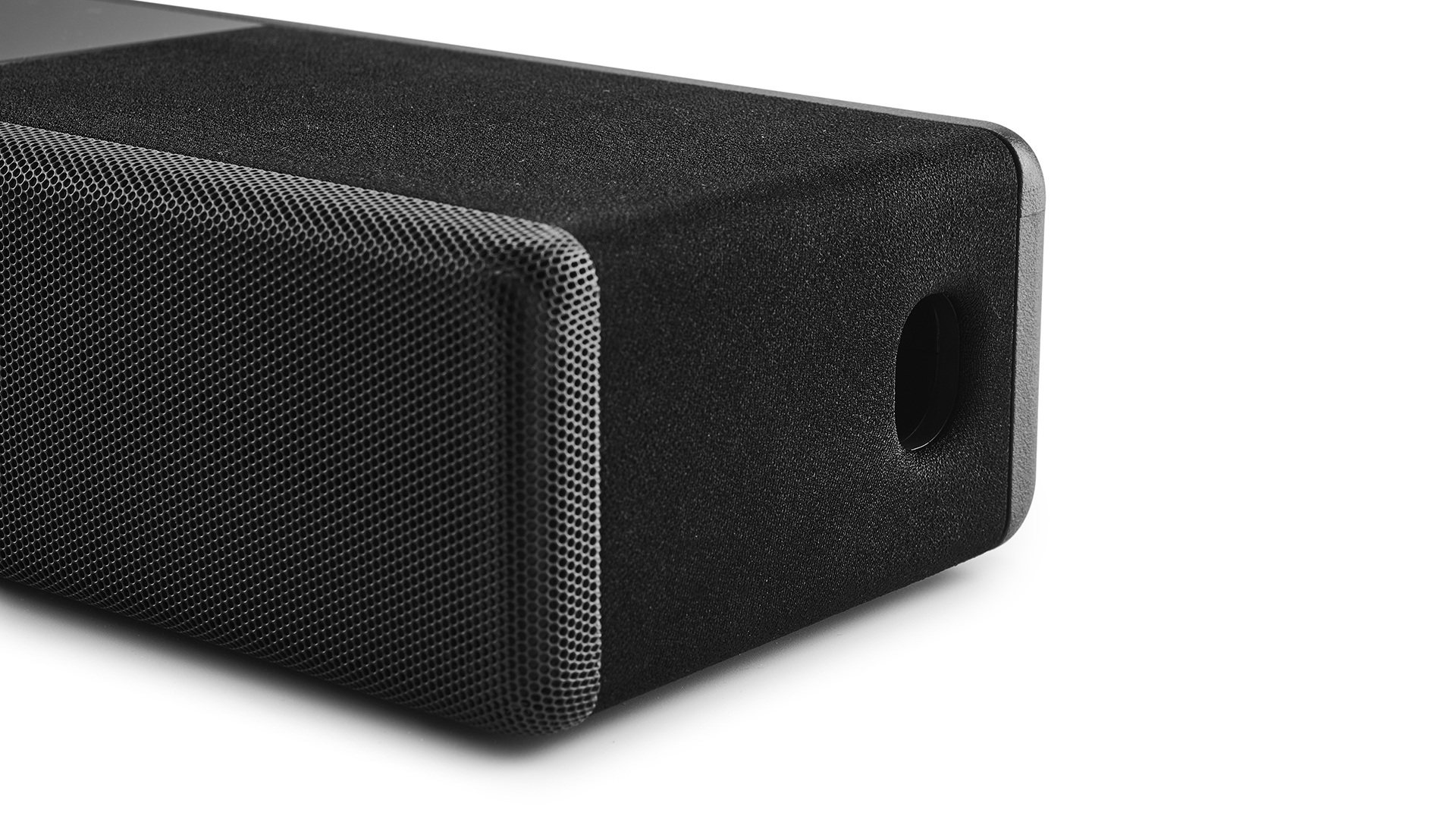
Standing proudly on its own two (rubberised) feet, the HT-A7000 doesn’t require any additional speakers to justify its hefty price point of £1199 / $1300 / AU$1699 or its position as Sony’s flagship soundbar.
However, if you did want to add to the HT-A7000, you could almost double that price. There’s a choice of two subwoofers, the 300W SA-SW5 priced at £699 / $700 / AU$899, and the 200W SA-SW3 costing £449 / $400 / AU$599. A pair of surround SA-RS3S speakers costs £449 / $350 / AU$649 and, slightly disappointingly at this price, they only have front-facing drivers.
The HT-A7000 replaces the Sony HT-ST5000, which was £1499 / $1500 (around AU$2830) at launch in 2017. It undercuts LG’s top-of-the-line 7.1.4 package, the SP11RA, which costs £1499 (around $2050, AU$1849) and Samsung’s 11.1.4 package, the HW-Q950A, which currently costs £1399 / $1500 / AU$1795.
Both the LG and Samsung include a separate sub and a pair of wireless surrounds but a single bar solution in the style of the Sony A7000 would be the award-winning 5.0.2 Sonos Arc, which delivers impressive Atmos performance on its own for £799 / $799 / AU$1399, but can also be expanded through the addition of two One SL speakers (£358 / $358 / AU$538) and, if required, a Sub (£699 / $699 / AU$999).
Build
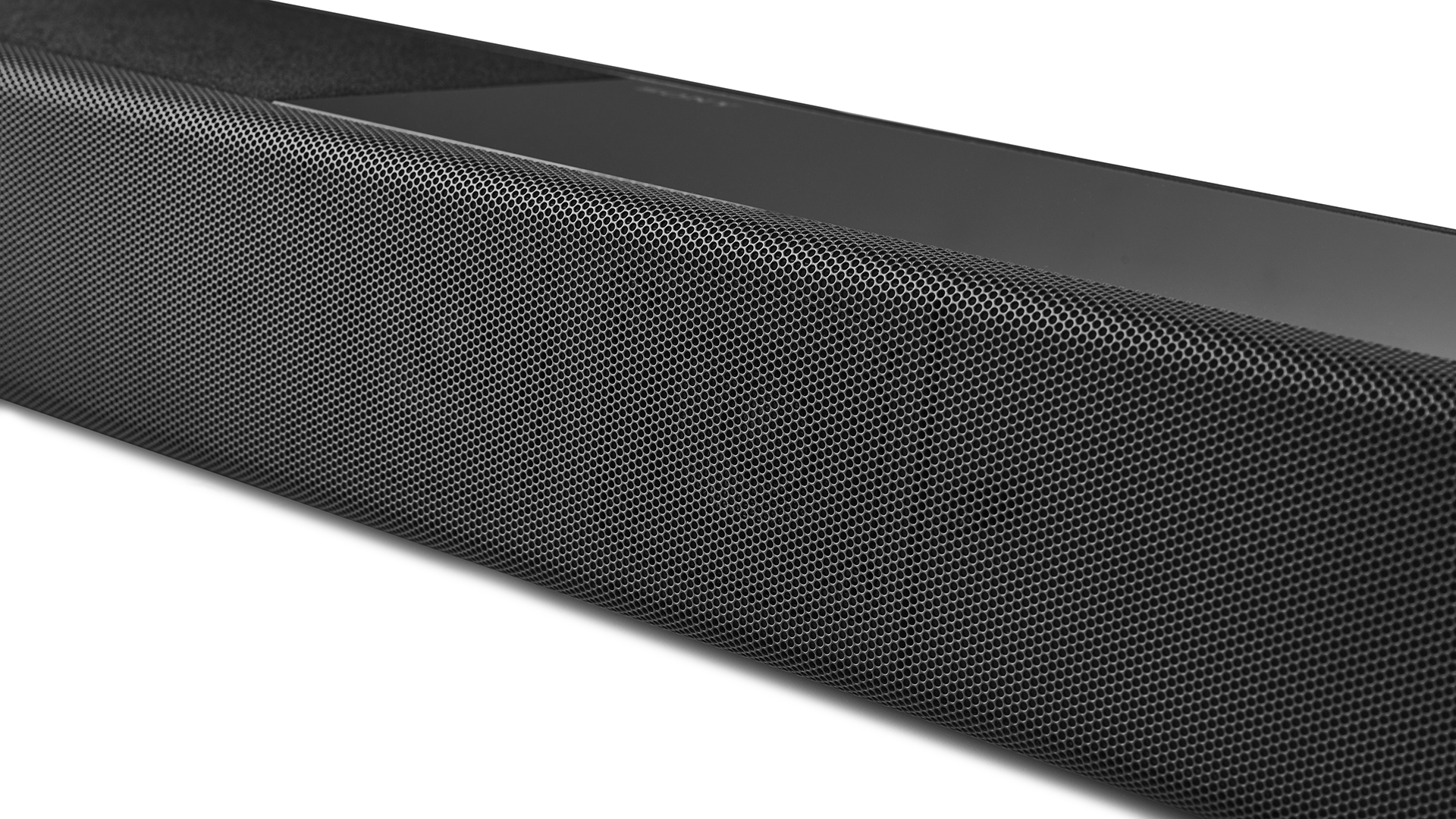
It may be just one unit but the HT-A7000 is an incredibly weighty 8.7kg and, at 8cm high, it’s taller than most, only just sneaking under the Sony A80J OLED TV that we test it with.
Described by Sony as an ‘Omnidirectional Block’ concept, shared by the rest of the range, the HT-A7000 is made up of a blend of materials, textures and shades of black, from the fabric covering the upward drivers and a perforated metal front grille, to the polished glass top surface and the greasy fingerprints that instantly appear on it after reaching for the capacitive function buttons. The build feels substantial and sturdy, although the mixed look of its design perhaps isn’t as slick as that of some of its competition.
While the main soundbar may be a bit unsure of its image, the included remote is firmly a ’90s throwback. Using this you can quickly access (almost) all of the A7000’s functions and check settings such as which audio format you’re currently listening to, with a scrolling text response on the front face of the soundbar. It’s a nice touch, but even better is the fully integrated on-screen set-up and options menu you get if you own a Bravia TV (Z9J, A90J, A80J, X95J, X90J, X85J or X80J series). Other AV brands have begun adding symbiotic technology to their soundbars and TVs but this is one of the best uses of it we’ve seen and is particularly useful given the heavy feature load of the A7000.
Features
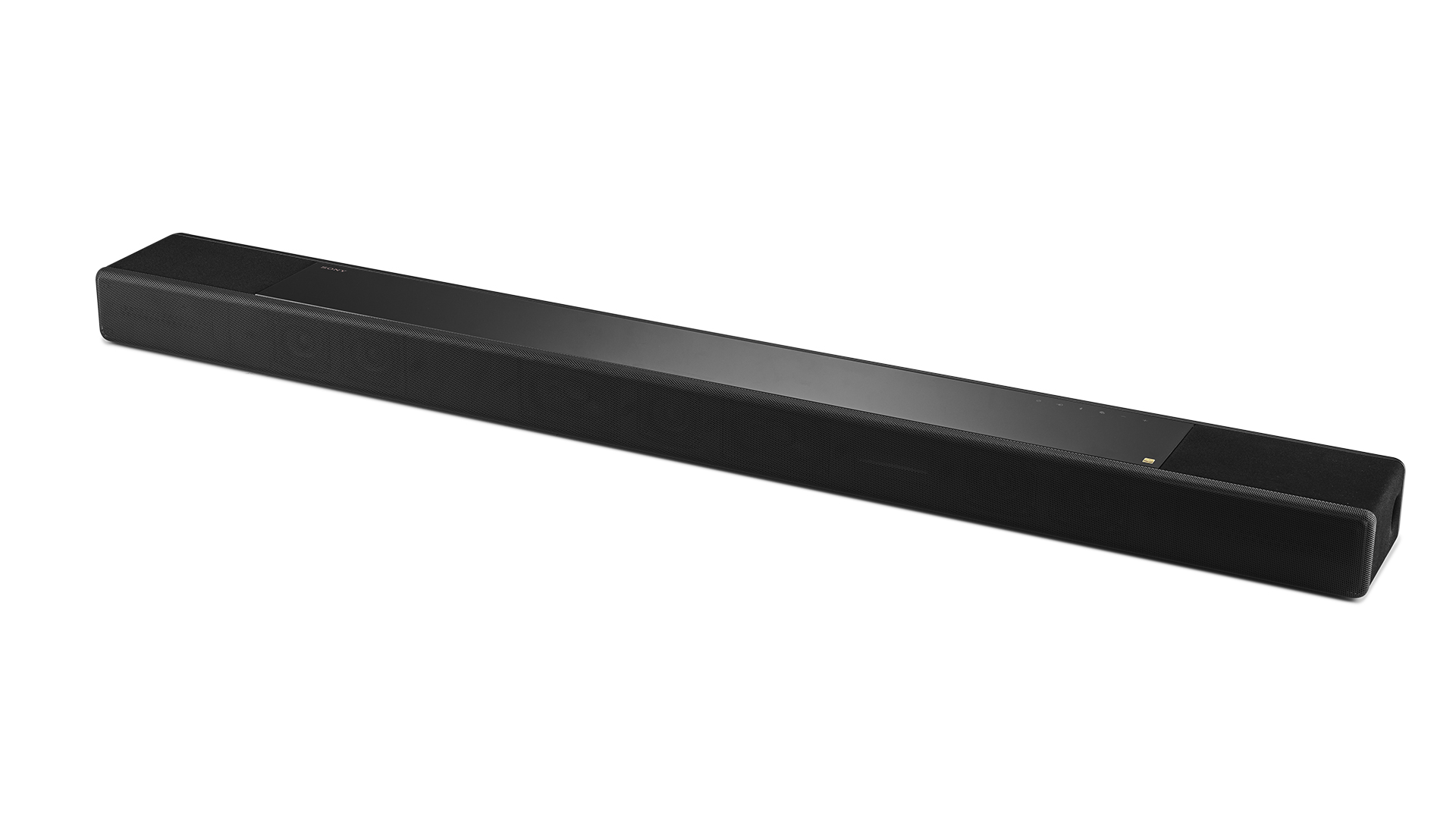
The set-up and room calibration process for the A7000 is a breeze, as is connecting to streaming services such as Spotify Connect, Apple AirPlay 2, Google Chromecast, and integration into a multi-room system – with Amazon Alexa, Apple HomeKit and Google Home all supported. It’s great to be able to get up and running without having to reach for your phone but, should you wish, the Sony Music Center app for Android and iOS offers another handy way to control the A7000. Our only gripe is that there aren’t any options to tweak the soundbar’s EQ bands on the remote. In fact, the only discrete tone settings available are three bass volume levels hidden away on the app’s sound settings.
The A7000 may be packed with streaming smarts but it is also heavily specced when it comes to physical connectivity too. Gamers and those whose TVs lack more than one spare HDMI port will be pleased to know there are two HDMI 2.1 pass-through sockets capable of handling 8K@60Hz, 4K@120Hz, and Dolby Vision HDR. While that sounds like full-fat HDMI 2.1, Xbox Series X (and, one day, PS5) users should note that at present the A7000 doesn’t support VRR or ALLM.
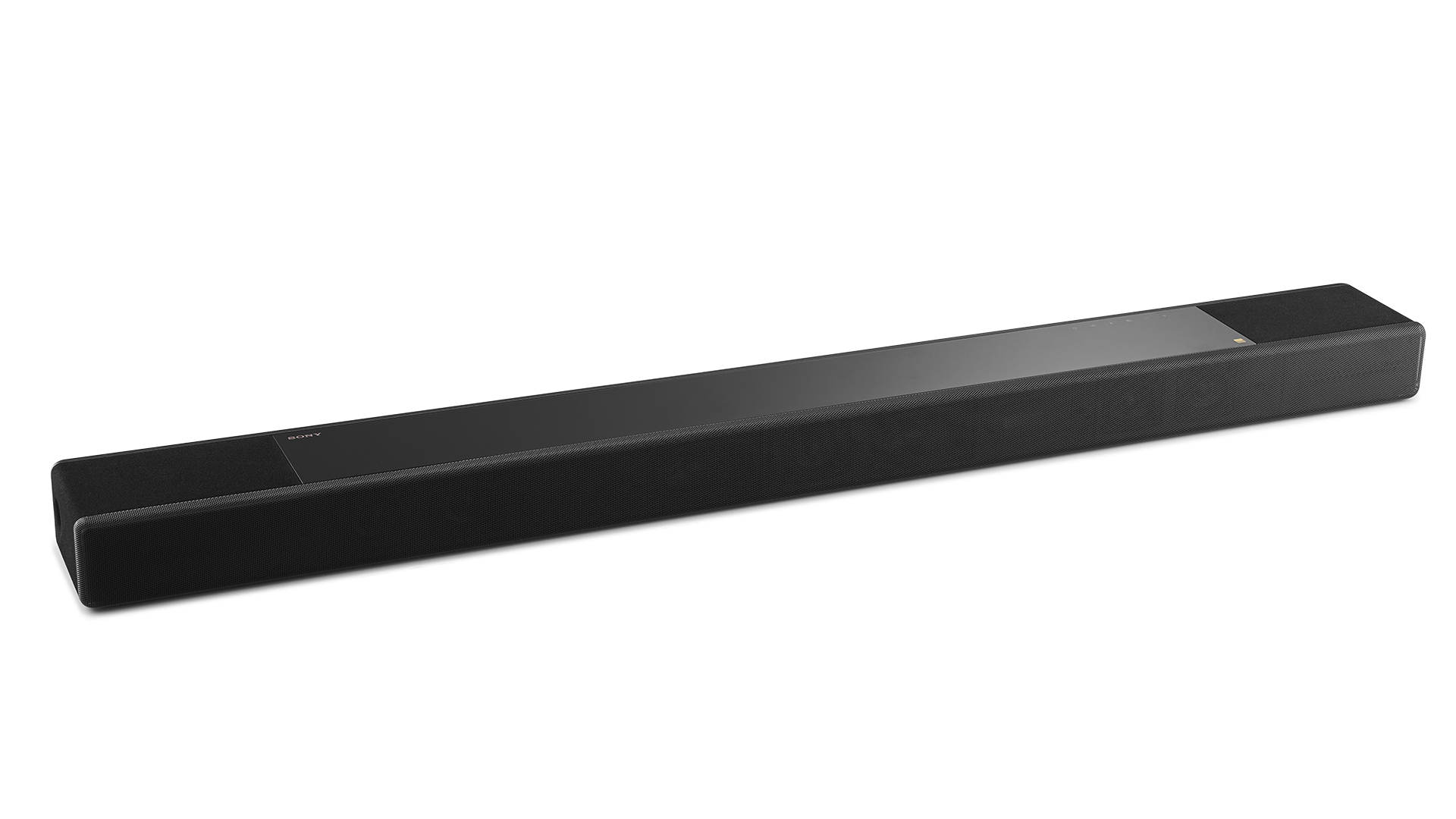
Connections eARC, 2*HDMI 2.1, optical, USB,
ARC/eARC eARC
Sound format support Dolby Atmos/ Dolby AudioTM/ DTS:X/ DTS-HD/ PCM
Bluetooth Yes Bluetooth 5
WiFi Yes
AirPlay 2 Yes
Chromecast Yes
Voice control Google Assistant, Alexa
Dimensions (hwd) 8 x 130 x 14 cm
Weight 8.7kg
Alongside these inputs, there are sockets for eARC/HDMI out, analogue and optical audio inputs, USB type-A, power and an analogue output for Sony’s Acoustic Center Sync, which lets a compatible Bravia TV become part of the soundbar’s centre channel when the two are connected using the supplied cable.
There are so many connections that the cavern on the rear that’s designed to hold all the ports is on the cramped side, which is worth bearing in mind if you think you might want to access it regularly.
In terms of supported audio formats, the A7000 excels itself again and includes Dolby Atmos (in both the Digital+ and TrueHD formats), DTS:X, LPCM, wireless hi-res audio and Sony 360 Reality Audio. The last of those is an object-based spatial technology that surrounds the listener, with compatible content available from Tidal, Amazon Music HD, Nugs and Deezer.
Sound
Sony has opted to use a combination of driver placement and psychoacoustic techniques to enhance the width and height of the soundstage whether you’re watching immersive content or not, and it works very well. Alongside the upward drivers, there’s the company’s Vertical Surround Engine (VSE), which up-mixes standard content to make use of the height channels. But more key to the A7000’s overall performance are the wide-spaced beam tweeters, which channel audio through a series of flute-like chambers, and Sony’s S-Force Front Surround Technology, which is engaged when the ‘Cinema’ and ‘Standard’ sound modes are selected.
So effective and transparent is the performance of these wide tweeters that while watching the opening scene of Gravity in Dolby Atmos we repeatedly check that there isn’t a speaker immediately to our side.
As Sandra Bullock rotates on screen, unable to detach from the spinning robotic arm, the brilliant sound design is superbly rendered spatially, undulating upward and outward, beyond the scope of the image. Later on, as she floats into the depths of space, snatches of radio static and comms appear to be spread on either side of the listening position. In terms of height and precision, the performance is similar to that of the Sonos Arc but the width of the soundstage and its forward projection is more convincing. It’s not the same as having direct audio from the speaker above or the side but it’s effective and dramatically enticing, enriching the viewing experience.
The integrated sub also impresses with a taut, controlled and powerful performance that we haven’t heard from a single soundbar, besides the pricier Sennheiser Ambeo. Even when we push it to the extremes with the pulsating synths of Blade Runner 2049, the subwoofer of the A7000 handles itself well with a strong leading edge while retaining musicality, though we do notch down its volume level from high to medium. The Vangelis-inspired score is reproduced with an appropriately epic sense of scale while retaining finer details. Dropping into quieter moments, the A7000 neatly picks out dialogue with transparent clarity.
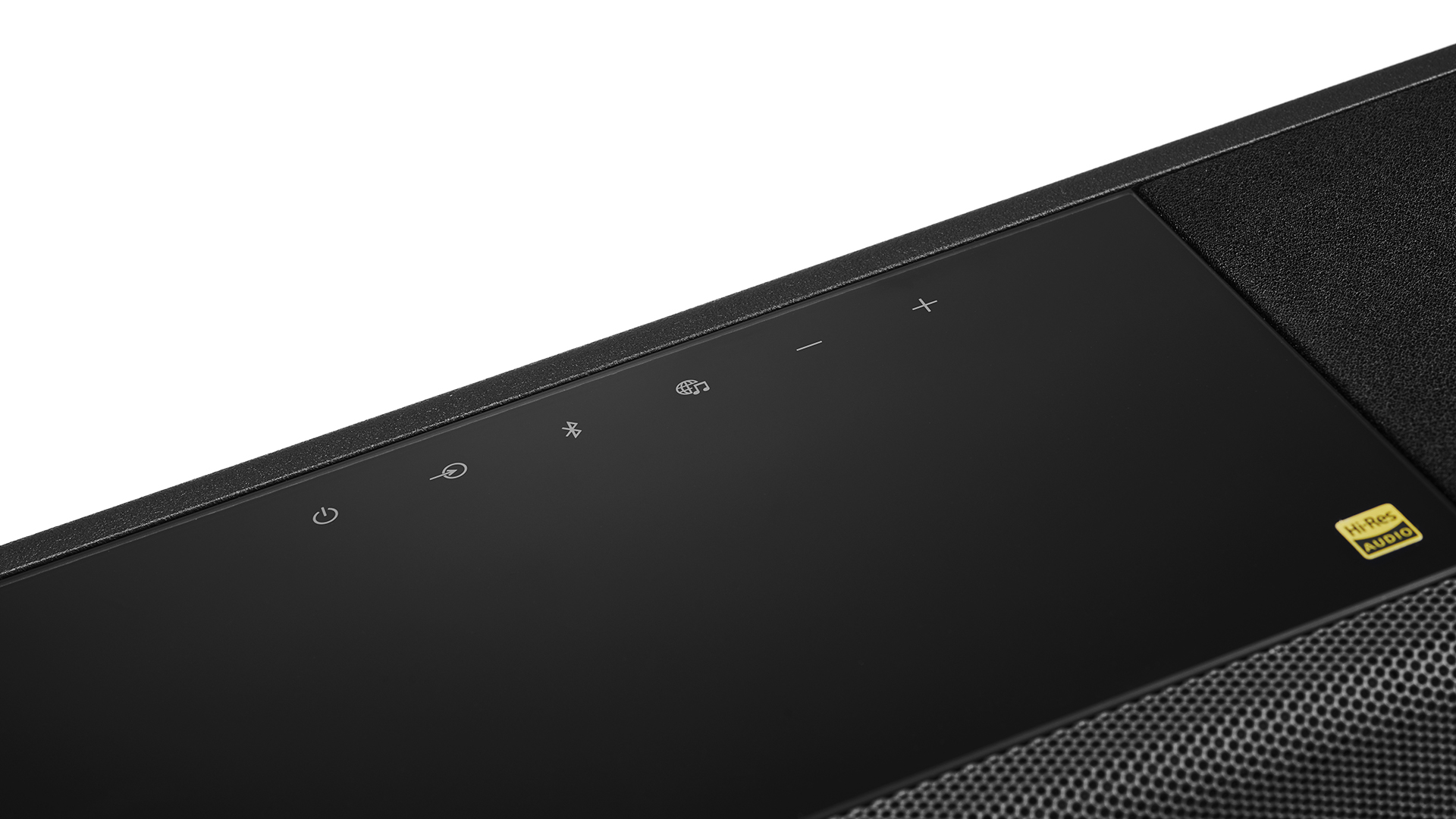
Swapping to Nomadland, which has a more restrained but still compelling Atmos sound design, the A7000 confirms its ability to handle lighter, nuanced sounds. The excellent depth of field means that changes of location are stark and powerful. Inside the van, with the subtle noises of the world passing by outside, the viewer feels tightly enclosed. From the cavernous clanking Amazon plant to the gentle winds and vast empty reverb of the open desert, the A7000 places you firmly into each space.
Throughout the film, dialogue is naturalistically, and often quietly, spoken – but once again the A7000 shows excellent presence, and while adding in the Sony TV to bolster the centre channel doesn’t dramatically alter the already impressive soundfield, it nicely adds to the openness and character of voices. Should you need it there’s a dialogue boost setting, and if you’re watching DTS:X content you can individually adjust the dialogue level using the remote.
When streaming music we find that keeping the A7000 in Standard mode or the weighty Cinema setting is preferable to Music mode, which doesn’t make use of S-Force Pro Front surround technology. The vertical sound engine, which up-mixes tracks to make use of the height speakers, is best left to classical or acoustic tracks without heavy rhythmic elements.
The deep, hypnotic bass in Björk’s Hyperballad is punchy, confident and rounded, with only the very lowest notes flattened off slightly. There’s plenty of headroom to push the volume but it’s unlikely you’ll need to venture above 70 unless you have very understanding neighbours.
In Led Zeppelin’s Ramble On, the clipping percussive transients, kick drum and bass maintain taut rhythmic coherence, while the guitars and vocals have plenty of separation with just the right amount of melody and edge.
Switching to the dynamically diverse Et In Carnatus Est and Santus of Mozart’s Grosse Messe there’s a pleasant warmth and consistency in the strings across the lower midrange, and the sub makes a decent attempt at the majestic timpani rolls and organ bursts. Here the vertical surround engine is an enjoyable addition and seems to add a touch of sweetness to the higher frequencies.
We decide to road test a few 360 tracks from Tidal’s catalogue for good measure and quickly realise that not all 360 tracks are created equal. For example, Foo Fighters’ Everlong on the A7000 feels a touch boomy and cluttered whereas the drum panning on Pearl Jam’s Alive fizzes with lively effervescence. Immersive audio is still very much a developing area for streaming companies but, for now, it’s a welcome bonus in an already feature-packed soundbar.
Verdict
The A7000 produces powerful, cinematic audio and an immersive, detailed soundfield from a single soundbar that impresses more than most multi-box systems.
If there were no limits to our income or living space we’d happily add the optional surrounds and sub, but the A7000 does not feel wanting of any extra support. It’s an incredibly competent, future-proofed performer that enhances everything we watch and sets a new benchmark for Dolby Atmos soundbars at its price.
SCORES
- Sound 5
- Features 5
- Build 5
MORE:
Here are the Best soundbars: the best TV speakers you can buy
Read our review of the Sonos Arc
Read our review of the Samsung HW-Q800A
Read our LG SP11RA review
What Hi-Fi?, founded in 1976, is the world's leading independent guide to buying and owning hi-fi and home entertainment products. Our comprehensive tests help you buy the very best for your money, with our advice sections giving you step-by-step information on how to get even more from your music and movies. Everything is tested by our dedicated team of in-house reviewers in our custom-built test rooms in London, Reading and Bath. Our coveted five-star rating and Awards are recognised all over the world as the ultimate seal of approval, so you can buy with absolute confidence.
-
Trevlyn Sony HT-A7000 : Read moreReply
Great review, How is it compared to the ht st5000 would you say its worth the upgrade?What Hi-Fi? said:Dripping with features, this hefty Dolby Atmos soundbar delivers exceptional, immersive audio from a single unit.
Sony HT-A7000 : Read more -
DukeOfKirkcaldy Replyonly just sneaking under the Sony A80J OLED TV that we test it with.
It's worth noting that it does not fit between the legs of the 55, even in the soundbar position. The whole thing needs to sit in front of the feet, which requires quite a bit of space! -
clarkorama I have this, got it on an RS offer that put it at 900 if bought with an XR Bravia. Then they gave me a ton gift voucher as well.Reply
I’ve no idea why they were pushing it so hard because there were hardly any in the country and I had to wait a month for it to even arrive.
It’s pretty impressive though. At the time all I could find were sponsored reviews so I wasn’t really sure how much faith I could put in them, but when I fired it up doubts were assuaged.
For a single bar it can fire sounds to the side and above surprisingly well. The bass is nicely meaty even with only the built in subs.
The only drawback to the thing for me is that EQ takes the form of Min, Mid, Max bass settings and then a series of presets for Cinema, Music, Voice etc. along with and “Immersive AI” button on the remote. All this rather than my sort of sliders or more detailed EQ.
That said, it is pretty nicely balanced. I would hope for firmware updates to add more detail and control here later though.
It’s also worth noting that the installation guide calls for a space of 80mm between the bar and the tv to allow the up-firing speakers to work. This is pretty impractical visually and I’ve just tilted the bottom of the set in to the wall. I’m not sure how it’s possible if using a set on its legs rather than wall mounted.
I,ve paired mine with an XR65A80J OLED, and to be honest the effect is amazingly cinematic. The tv is a stunner and the bar just adds the boom. The sound from the a80 was already good because it uses “acoustic surface” which is amazing in and of itself, but because the pairing is all on brand the bar uses that AS as an extra centre speaker.
The functions for the bar just appear in the quick menus for the tv so you can control it all from one place.
I’ll add the rear speakers at some point when they go on sale, but at the moment I couldn’t really be happier with it.
Normally with something this expensive I tend to get a bit of buyers remorse, but with both the tv and soundbar I have absolutely no regrets.
I would buy it again for sure.
It’s a big outlay but very worth it. -
Mike Ali I have owned both the Sony A7000 and the Samsung Q990. I was looking for something as an improvement over an old Sony STR-DN1030 and a pair of small bookshelf speakers (Q-Acoustics 2020), I didn't have the space for bigger speakers up front, or cabled speakers anywhere else.Reply
I wanted to improve my listening experience, my existing speakers were average quality for a medium size room, but they didn't wow me. I wasn't so interested in Atmos effects as I have a very odd shaped room with one side of the soundbar close to a wall, plus a vaulted ceiling.
The A7000 (the soundbar alone without bass or rear speakers) in my opinion did not improve my music setup - irrespective of genre (jazz, rock, prog, punk, electronic). The soundstage is very narrow, it really sounds like it's coming from the soundbar, with little separation. There's quite a lot of bass, but it drowns out the mids and treble to the point where things sound flat.
My use-case may not be the best since I wasn't looking for a soundbar exclusively for TV/films, my driver was music. I tried all the sound settings, cinema, music, standard and immersive AI, but IMHO they sounded worse than my current setup, and in I felt a little too processed.
I have many Sony products, from the AV amp, 4k BluRay and turntable, and even an Xperia 1III mobile which can play high-res spacial audio via Tidal over LDAC, therefore I wanted the Sony Soundbar as I felt it would play nice with the rest of the kit. Fortunately, it did work with everything, including the AV amp with turntable and FM radio. I connected the 3.5mm audio cable from the headphone out on the AV amp to the analog input on the soundbar.
The Samsung Q990 on the other hand is another story. Obviously the Samsung has a sub-woofer and rear speakers, so it has the advantage of separating sound. I never tested just the soundbar alone. The sound really seems to surround you, very immersive, crisp, great bass (I had to turn down the sub to -2), the Adaptive sound did an amazing job of separating all around the living room and kitchen area to the point where it made me want to re-listen to some of my favourite music for the joy of it.
I have just ordered an 'analog to digital converter' so I can connect the old AV amp to the toslink optical connector on the soundbar so I can get my turntable and radio working.
I went with the Samsung also because it has 2 HDMI inputs. One for my 4k BluRay player, and the other for my 4k Firestick Plus. Note, my 2019 Samsung TV technically doesn't support Atmos audio, hence the Firestick.
If music is your interest then a pair of decent bookshelf speakers will be better than the A7000, but the Q990B may be even better (depending on your budget of course). I'm living in Italy, so the Sony costs around €1200 for just the bar, whilst the Q990 comes in at around €1000. You can pick up new Q-Acoustic bookshelfs for €400, but I'm sure there are others which can cost 2 to 3 times as much and deliver a better sound.
